1929 Packard Saloon 633 Sedan 8 Cylinder Great Driver Quality CCCA
- Price:
- Make: Packard
- Model: 633 Salon
- SubModel: 633 Salon Sedan
- Type: Sedan
- Trim: Sedan Packard CCCA
- Year: 1929
- Mileage: 100,000
- Color: Burgundy
- Engine size: 8
- Number of cylinders: 8
- Fuel: Gasoline
- Transmission: 3spd
- Drive type: RWD
- Interior color: Brown
- Vehicle Title: Clear
- Location: Newfield, New Jersey, United States
Description
1929 Packard 633 Salon SedanExterior paint looks great with only some imperfections. Interior is in great shape and is finished in leather.
Older 80's Restoration
| |
The new Standard Eight series replaced the Packard Six, which was discontinued in 1929. One of the most popular 1929 Packard models was the 6-33 seven-passenger sedan. It was ideally suited for both family and business use, and while it was not as sporty as a roadster or touring car, it was vastly more practical and comfortable, then and now. With a $2675 price tag when new, it was not an inexpensive car and looks the part of a high-end luxury sedan. And yes, all 1929 Packards are designated as Full Classics by the Classic Car Club of America (CCCA).
This particular 1929 6-33 7-passenger sedan was restored in the 1980s, and today presents as a well-sorted driver that is ideal for touring and casual shows. From a collection where regularly driving and enjoying the cars is mandatory, this Packard is completely road-worthy and ready to go on a moment’s notice. Refinished in Burgandy two tone, it’s an elegant, formal-looking car that is ideally complimented by white wall tires. The paint is single-stage lacquer and the finish is still excellent on the body, though the front fenders are just now starting to show paint age. The doors open and close precisely and latch securely with no rattles.
Chrome and other bright work on the car is a combination of original items and pieces that were undoubtedly restored with the rest of the car. Obviously the door handles are original pieces that have aged to a nice patina, but the radiator shell, bumpers, and cowl trim were all re-plated at the time of restoration in the 80s and remain in good condition today but show age, with only very minor pitting visible where the radiator shell meets the painted center insert. The famous “lady with donut” hood ornament is in good condition, and I’m not sure restoring it again would improve its appearance. The headlights and cowl lights carry a soft gloss that is exactly appropriate to the car, while the Packard crest on the radiator shell appears to be in original condition. Aftermarket taillights and side-view mirrors have been added in the name of touring safely, and a turn signal system has been incorporated into the cowl lights. I think if this were my car, I’d find a way to better disguise those rear taillights, but they work properly and greatly improve visibility from behind.
Powering all 6-33 models in 1929 was Packard’s 320 cubic inch straight-8 producing 90 horsepower. Nine main bearings provide remarkable smoothness and durability, and Packard’s famous machining tolerances make these some of the most rugged and reliable engines of the era. For 1929, an oil filter was added, and there’s a level gauge for crankcase oil. This big sedan’s engine was likely rebuilt when the car was restored, and today runs beautifully using the original 6-volt electrics and vacuum tank fuel system. Cosmetically, the engine is functional and clean, not detailed for show, but it would not take much work to elevate it to the next level if that’s your desire. It still uses the correct Packard carburetor and vacuum tank, although I think I would remove the crude homemade heat shield around the vacuum tank—its functionality is dubious at best and its appearance doesn’t do much for the engine compartment. The engine fires up quickly, idles beautifully, and drives wonderfully, with big Packard torque available at very low speeds.
The transmission is, of course, a 3-speed manual, although Packard had not yet incorporated synchromesh into their transmissions in 1929, necessitating double-clutching. However, I found this one extremely easy to drive and it doesn’t mind quick shifting—in fact, it seems to prefer it. Downshifts are easy with just a quick blip of the throttle. Enhancing the driving experience is an R11 overdrive unit installed 2 years ago by overdrive expert Lloyd Young of Columbus, Ohio. The system is almost transparent in usage, and slips into overdrive at about 25 MPH when you lift off the throttle in high gear. You can feel a slight kick as the overdrive is activated, and then the car pulls easily up to about 55 MPH, where it will happily cruise all day. There’s a reverse lockout to prevent damage to the overdrive unit when backing up, and the system is easy to use and one of the best additions you can make to an old car with 4.69 gears in back. And while many cars of this vintage receive wide whitewalls when they are restored, the Packard catalog for 1929 shows this model with blackwall tires. With that in mind, this car now wears a set of new 6.50-20 White walls on the original disc wheels with split rims. The effect is imposing and dramatic.
The rest of the chassis is clean and well-maintained, showing signs of many years of happy motoring. Components are serviceable and clean, but not detailed for show. The exhaust was probably replaced in the ‘80s and is still leak-free and sounds like a Packard should. Braking is firm and steady and the car tracks extremely well. In fact, I should admit that a half-hour before driving this car, I was behind the wheel of a recently restored 1930 Cadillac V16 Fleetwood limousine. With all due respect to that spectacular Cadillac, I found this Packard to be much easier to drive and handle on the road and instantly felt more confident behind the wheel (whether that is because of the orders of magnitude difference in price tags, I can’t say for certain). And the view over the Packard hood is my absolute favorite in all of motoring.
The wool broadcloth interior is beautifully finished and still holding up well after nearly three decades. The upholstery fabric is excellent, and even the driver’s seat shows very little wear. In back, space is expansive, and there’s plenty of room for five with the jump seats in place. Cushions are firm and the patterns are correct throughout. The brightwork is in good shape, and the gauges appear to all be functional except the fuel gauge. Sadly, there’s no way to verify whether the mileage shown is authentic, but it’s best to assume that it is not. The wood on the dash is in excellent shape, although the window garnish moldings are getting a little dry—easily remedied with some linseed oil. The aluminum floor boards up front are in excellent condition, and the hard rubber steering wheel feels great in your hands. During my drive, the engine temperature never rose above 160, there was plenty of oil pressure, and, well, the car just went about its business like it should.
Serious offers only please.
Clear NJ Title
SJCLASSICS.NET
A $500 deposit requiredat endof auction end. PayPal, Money order, Cash or Cashier's Check only . Car needs to be paid in full within7 days unless prior arrangements are made. Buyer to arrange and pay for shipping. I will assist with arrangements if needed. Car will not be released until funds have cleared.
THERE ARE OVER 30 HDPHOTO'S BELOW. DEPENDING ON YOU DISPLAY FORMAT YOU MAY HAVE TO LOOK FOR A SECOND SCROLL BAR ON YOUR RIGHT TO VIEW THE PHOTO'S. YOU CAN ALSO CLICK ON ANY PHOTO TO VIEW MORE!
More Packard classic cars for sale
 1938 Packard 1603 Super Eight Touring Sedan | CCCA Full Classic | 320ci Inline-8
1938 Packard 1603 Super Eight Touring Sedan | CCCA Full Classic | 320ci Inline-8
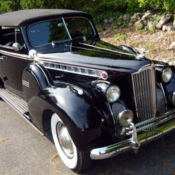 1940 Packard 160 Convertible Sedan - 37k Original Miles! Great Driver!
1940 Packard 160 Convertible Sedan - 37k Original Miles! Great Driver!
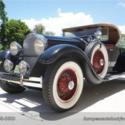 1929 Packard Eight Roadster 14444 Miles Black Convertible 8-Cylinder Manual
1929 Packard Eight Roadster 14444 Miles Black Convertible 8-Cylinder Manual
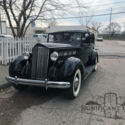 1937 Packard 120 All Weather Cabriolet Rollston - 1 of 2! CCCA!
1937 Packard 120 All Weather Cabriolet Rollston - 1 of 2! CCCA!
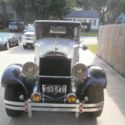 1929 Packard 626 STD 8 Sedan
1929 Packard 626 STD 8 Sedan
 1929 Packard 633 7 passenger sedan
1929 Packard 633 7 passenger sedan
 1929 PACKARD 626 STANDARD 8 SEDAN
1929 PACKARD 626 STANDARD 8 SEDAN
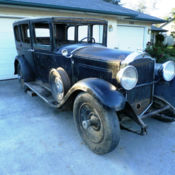 1929 Packard Model 626 Sedan
1929 Packard Model 626 Sedan
 Frame Off Restored CCCA Senior 1 of 69 Packard Twelve 473 V12 3 Speed Manual
Frame Off Restored CCCA Senior 1 of 69 Packard Twelve 473 V12 3 Speed Manual
 1931 Packard Deluxe Eight Sport Phaeton | One of 97 built | CCCA eligible
1931 Packard Deluxe Eight Sport Phaeton | One of 97 built | CCCA eligible
 1938 Packard 1603 Super Eight Touring Sedan | CCCA Full Classic | 320ci Inline-8
1938 Packard 1603 Super Eight Touring Sedan | CCCA Full Classic | 320ci Inline-8
Year: 1938
Mileage: 88837
Mileage: 88837
 1940 Packard 160 Convertible Sedan - 37k Original Miles! Great Driver!
1940 Packard 160 Convertible Sedan - 37k Original Miles! Great Driver!
Year: 1940
Mileage: 37,000
Mileage: 37,000
 1929 Packard Eight Roadster 14444 Miles Black Convertible 8-Cylinder Manual
1929 Packard Eight Roadster 14444 Miles Black Convertible 8-Cylinder Manual
Year: 1929
Mileage: 14,444
Mileage: 14,444
 1937 Packard 120 All Weather Cabriolet Rollston - 1 of 2! CCCA!
1937 Packard 120 All Weather Cabriolet Rollston - 1 of 2! CCCA!
Year: 1937
Mileage: 25000
Mileage: 25000
 1929 Packard 626 STD 8 Sedan
1929 Packard 626 STD 8 Sedan
Year: 1929
Mileage: 7,656
Mileage: 7,656
 1929 Packard 633 7 passenger sedan
1929 Packard 633 7 passenger sedan
Year: 1929
Mileage: 999,999
Mileage: 999,999
 1929 PACKARD 626 STANDARD 8 SEDAN
1929 PACKARD 626 STANDARD 8 SEDAN
Year: 1929
Mileage: 7565
Mileage: 7565
 1929 Packard Model 626 Sedan
1929 Packard Model 626 Sedan
Year: 1929
Mileage: 99,000
Mileage: 99,000
 Frame Off Restored CCCA Senior 1 of 69 Packard Twelve 473 V12 3 Speed Manual
Frame Off Restored CCCA Senior 1 of 69 Packard Twelve 473 V12 3 Speed Manual
Year: 1937
Mileage: 32,721
Mileage: 32,721
 1931 Packard Deluxe Eight Sport Phaeton | One of 97 built | CCCA eligible
1931 Packard Deluxe Eight Sport Phaeton | One of 97 built | CCCA eligible
Year: 1931
Mileage: 1,939
Mileage: 1,939


